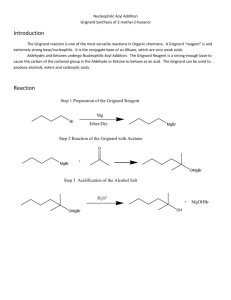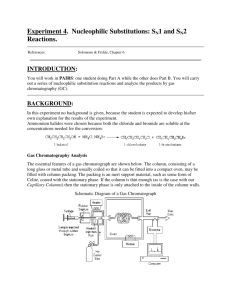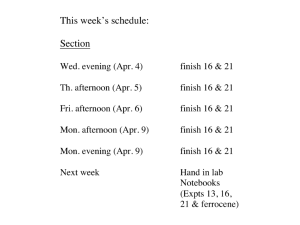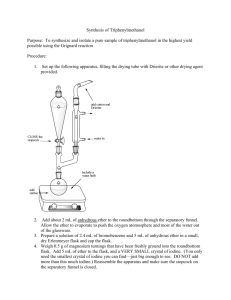***** **** 11
advertisement
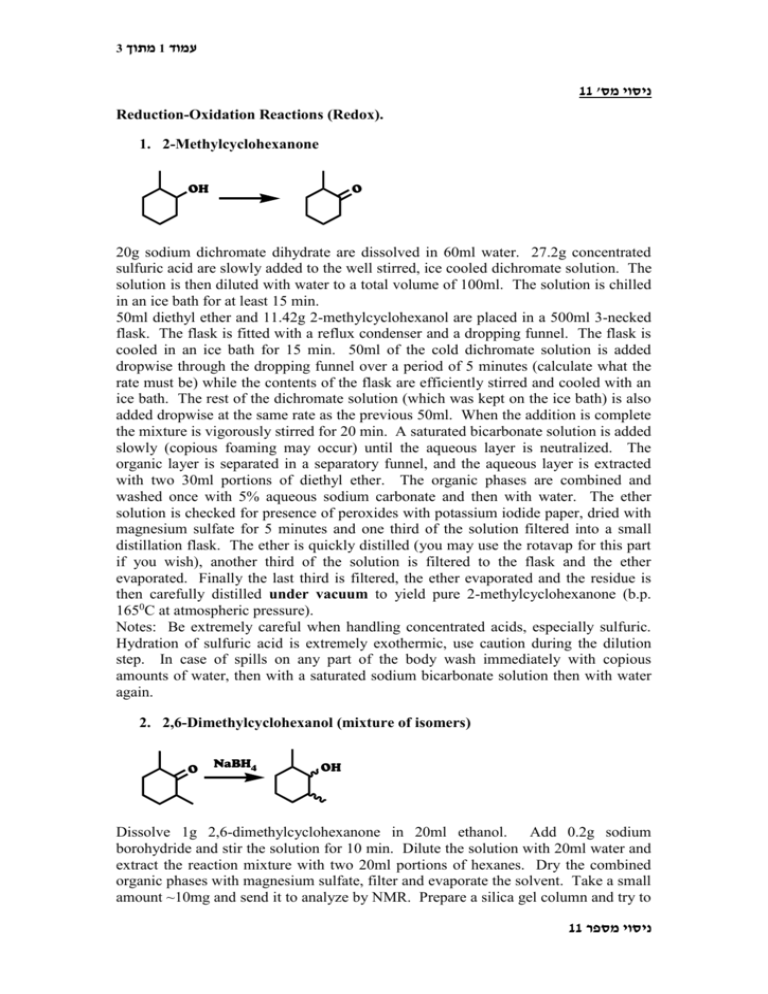
3 מתוך1 עמוד 11 'ניסוי מס Reduction-Oxidation Reactions (Redox). 1. 2-Methylcyclohexanone OH O 20g sodium dichromate dihydrate are dissolved in 60ml water. 27.2g concentrated sulfuric acid are slowly added to the well stirred, ice cooled dichromate solution. The solution is then diluted with water to a total volume of 100ml. The solution is chilled in an ice bath for at least 15 min. 50ml diethyl ether and 11.42g 2-methylcyclohexanol are placed in a 500ml 3-necked flask. The flask is fitted with a reflux condenser and a dropping funnel. The flask is cooled in an ice bath for 15 min. 50ml of the cold dichromate solution is added dropwise through the dropping funnel over a period of 5 minutes (calculate what the rate must be) while the contents of the flask are efficiently stirred and cooled with an ice bath. The rest of the dichromate solution (which was kept on the ice bath) is also added dropwise at the same rate as the previous 50ml. When the addition is complete the mixture is vigorously stirred for 20 min. A saturated bicarbonate solution is added slowly (copious foaming may occur) until the aqueous layer is neutralized. The organic layer is separated in a separatory funnel, and the aqueous layer is extracted with two 30ml portions of diethyl ether. The organic phases are combined and washed once with 5% aqueous sodium carbonate and then with water. The ether solution is checked for presence of peroxides with potassium iodide paper, dried with magnesium sulfate for 5 minutes and one third of the solution filtered into a small distillation flask. The ether is quickly distilled (you may use the rotavap for this part if you wish), another third of the solution is filtered to the flask and the ether evaporated. Finally the last third is filtered, the ether evaporated and the residue is then carefully distilled under vacuum to yield pure 2-methylcyclohexanone (b.p. 1650C at atmospheric pressure). Notes: Be extremely careful when handling concentrated acids, especially sulfuric. Hydration of sulfuric acid is extremely exothermic, use caution during the dilution step. In case of spills on any part of the body wash immediately with copious amounts of water, then with a saturated sodium bicarbonate solution then with water again. 2. 2,6-Dimethylcyclohexanol (mixture of isomers) O NaBH4 OH Dissolve 1g 2,6-dimethylcyclohexanone in 20ml ethanol. Add 0.2g sodium borohydride and stir the solution for 10 min. Dilute the solution with 20ml water and extract the reaction mixture with two 20ml portions of hexanes. Dry the combined organic phases with magnesium sulfate, filter and evaporate the solvent. Take a small amount ~10mg and send it to analyze by NMR. Prepare a silica gel column and try to 11 ניסוי מספר 3 מתוך2 עמוד separate the isomers. Use TLC to help you choose which solvent mixture to use for the column, you may use a mixture of ethyl acetate with petrol ether. The R f of the highest running compound should not exceed 0.4. You may need to use iodine to develop the TLC to see your compounds clearly after the reduction step. Compare the NMR sample of the original mixture with your final products after purification by column chromatography. Think about which isomers you are (at least) theoretically able to separate and which not. 3. Heptanal H N • CrO3Cl O OH Reference: Experimental Organic Chemistry Principles and Practice; L. Hardwood and C. Moody. Pages 520-522. Notes: You will receive the necessary amount of PCC so you only need to do the oxidation step. When you filter the solution through the Florisil (or silica gel) pad make sure to use a büchner funnel and work as quickly as possible. If the heptanal remains in the silica gel for a long time it might react (think about which reactions may happen). Use the coil heating mantle to heat the liquid quickly and distill your compound under vacuum to minimize decomposition of the product. 4. 3-Aminoacetophenone O NO2 O NH2 Reference: Experimental Organic Chemistry Principles and Practice; L. Hardwood and C. Moody. Pages 492-494. Notes: You may do experiment No. 5 if you have enough time. It is also a reduction reaction of 3-nitroacetophenone, but it gives a different product (chemoselective reaction). 5. 1-(3-Nitrophenyl)ethanol OH O NO2 NO2 11 ניסוי מספר 3 מתוך3 עמוד Reference: Experimental Organic Chemistry Principles and Practice; L. Hardwood and C. Moody. Pages 492-494. Notes: You may do experiment No. 4 if you have enough time. It is also a reduction reaction of 3-nitroacetophenone, but it gives a different product (chemoselective reaction). 11 ניסוי מספר
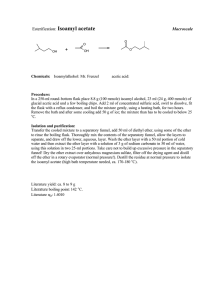
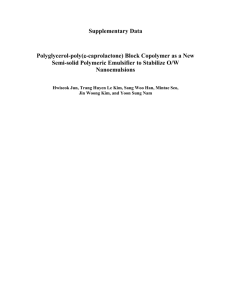
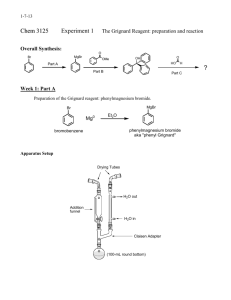
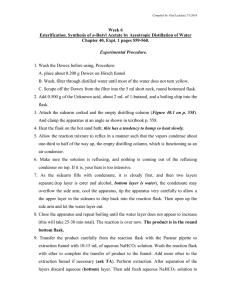

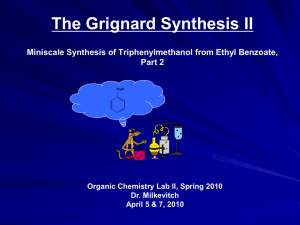
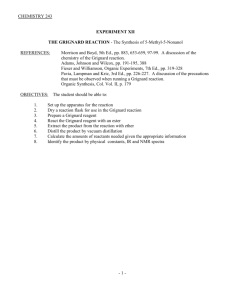
![AL Chem Written Practical (Organic Chemistry) [F.7]](http://s2.studylib.net/store/data/005797652_1-4911d95dd6c8a0840f727bd387aa6027-300x300.png)
